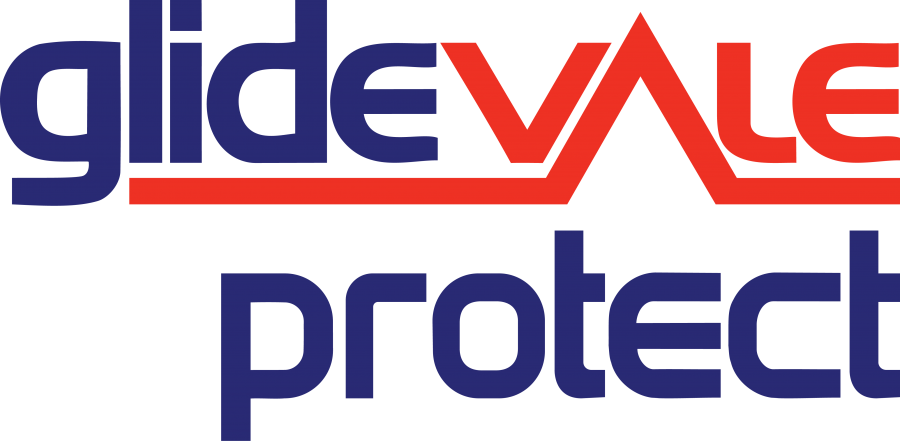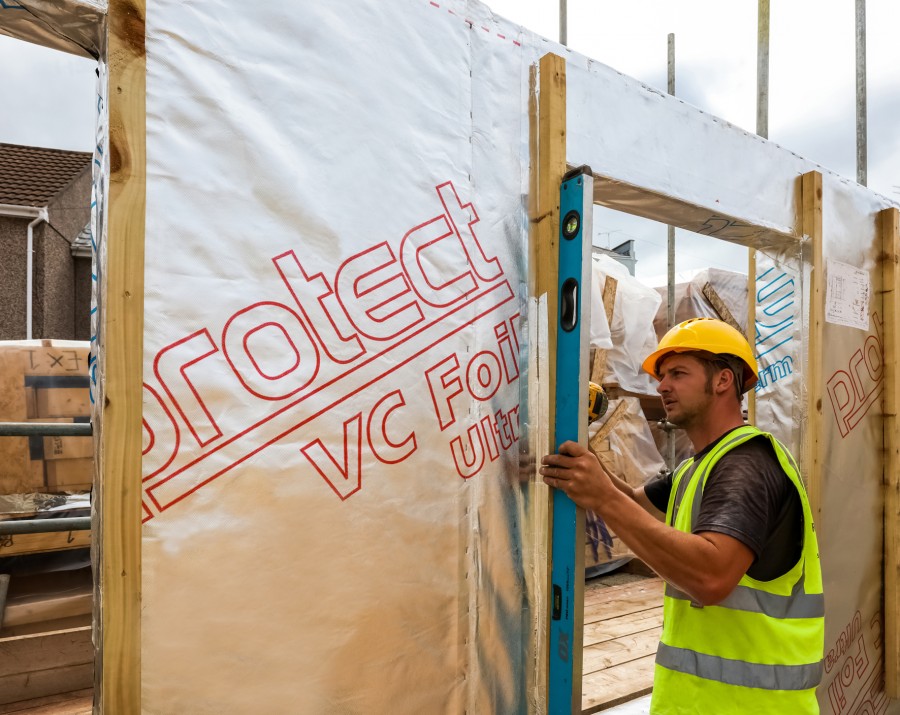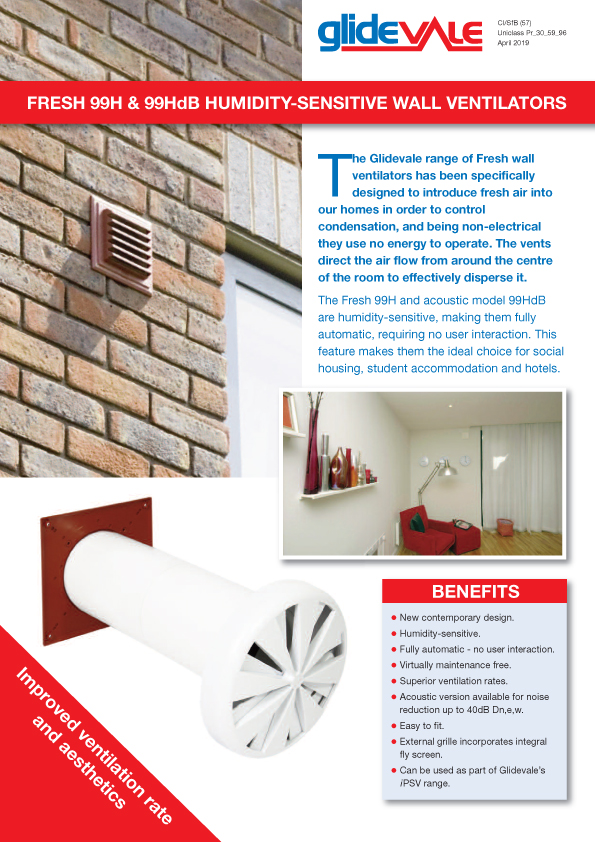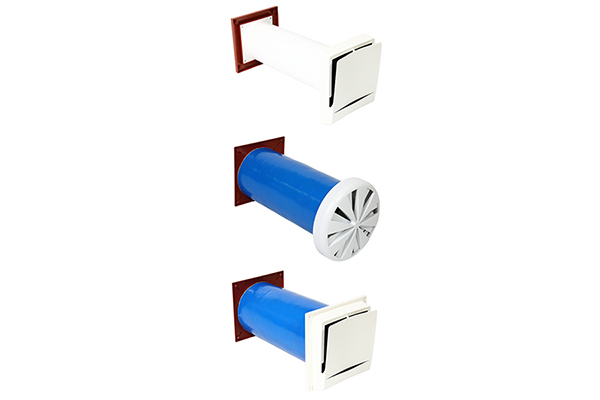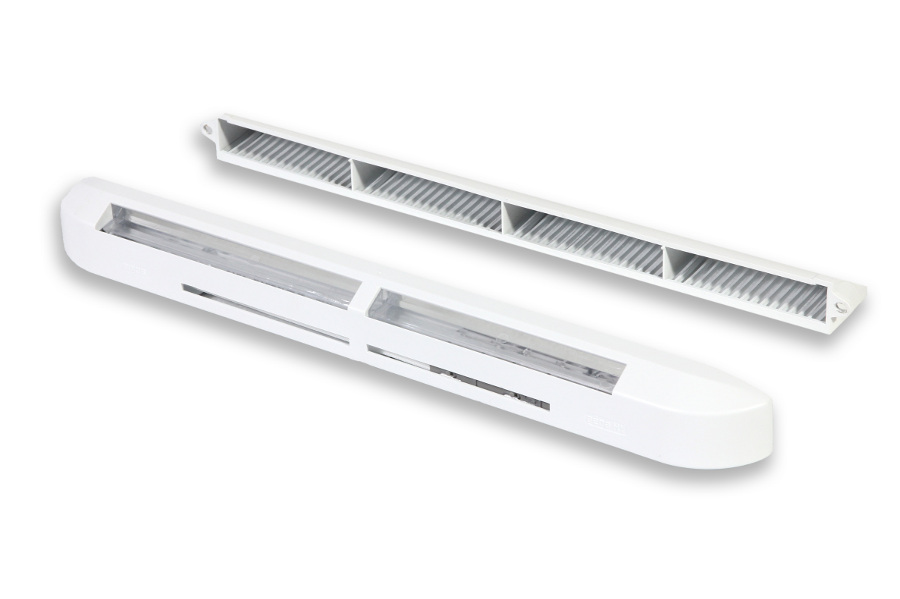Protect Viking Air is a new air and vapour permeable roof underlay suitable for cold and warm pitched roof constructions from UK building product manufacturer Glidevale Protect. To help specifiers get to grips with the technical attributes of this new product, Glidevale Protect’s senior product manager John Mellor takes us through some commonly asked questions.
Q. Is additional ventilation required with Protect Viking Air?
A. Thanks to the technology behind Protect Viking Air, this ensures top level performance is achieved in air and vapour permeability, delivering a high rate of uninterrupted airflow to eliminate the need for additional ventilation and reducing the risk of condensation in line with BS 5250.
The current BS 5250 guidance for an LR (vapour permeable) underlay used in a cold roof application is 5mm ventilation at ridge with either a well-sealed or normal ceiling.The NHBC permits the use of an air and vapour permeable roofing underlay such as Viking Air in a cold roof construction, without the requirement for additional ventilation based on the air permeability of the underlay providing suitable ventilation – at least the equivalent of a continuous 5mm high-level slot.This is referenced in the NHBC’s Technical Requirements R3 document:
‘where the air permeability of the underlay can be shown to provide suitable ventilation, i.e. at least the equivalent of a continuous 5mm high-level slot, NHBC will accept that underlay without the need to provide any further ventilation.’
Protect Viking Air, categorised as an air and vapour permeable roofing underlay, can achieve the equivalent of 5mm high level ventilation and can therefore be used in cold roof construction without additional roof space ventilation.
In cases where there is an impermeable roof covering installed such as fibre cement or metal tiles, there will be a requirement for ventilation.In these cases, the batten space needs to be ventilated with 25mm counter battens and ventilation provided – 25,000mm2/m at eaves or low level and 5,000mm2/m at ridge or high level.Alternatively, if closed jointed sarking with no gaps is used directly beneath the underlay, this will restrict the underlay’s permeability and airflow within the roof, so ventilation will be required.

Q. How air and vapour permeable is Protect Viking Air?
A. Protect Viking Air has been tested to BS EN 12114 with the underlay allowing for 78.71m³/m²/hr of air permeability @ 50 Pascals, achieving the best performance in the air permeable underlay market.The water vapour resistance has also been tested to BS EN ISO 12572, Method C and allows 0.04 MNs/g or 0.008 Sd (m) of vapour resistance, so is classed as a vapour permeable underlay with low resistance (LR), ensuring the product also provides the best vapour permeability in the air open underlay category.
Q. Is a separate air and vapour control layer (AVCL) required with Protect Viking Air?
A. Whilst the installation of a separate AVCL is not a mandatory requirement when Protect Viking Air is installed on the roof, Glidevale Protect recommends the use of an air and vapour control layer on the warm side of the insulation, where this is achievable.
If the specification demands a belt and braces approach with a well-sealed ceiling, this offers benefits over an unsealed ceiling.As stated in BS 9250, the code of practice for design of the airtightness of ceilings in pitched roofs, a well-sealed ceiling can reduce air and vapour transmission into the roof by 70% which will save about 8-10% of the energy consumed in a typical house.Delivering this airtightness means energy efficiency is maintained, helping reduce overall energy bills for the homeowner.
If there are gaps in the ceiling such as around loft hatches, service pipes and light fittings, air and vapour may flow from the living area to the loft space. With heat and moisture passing through the gaps, this not only contributes to energy loss from the building but also creates a risk of warm air from the property meeting cold, which would result in the dew point being achieved and ultimately, condensation risk in the roof space. The ability to seal at this junction is down to the practicability of the design and the standard of workmanship involved in installation.
BS 5250, the code of practice for the control of condensation in buildings, recommends that air leakage through ceilings should be minimised. The BS 9250 standard also provides guidance on methods that can be used to meet the “well-sealed ceiling” requirements defined in BS 5250 for cold and warm pitched roofs.
To support the above guidance in BS 5250 and BS 9250, Glidevale Protect has a full range of products that can work hand in hand with Protect Viking Air (and indeed all Glidevale Protect roofing underlays), ensuring buildings are designed and constructed using a fabric first approach with the aim to minimise energy consumption.This includes both reflective and non-reflective air and vapour control membranes, sealing tapes and loft hatches which are designed to support the control of condensation and heat loss at this critical junction.The installation of these products can also improve the roof structure’s overall thermal performance, potentially reducing the thickness of insulation within the ceiling whilst achieving strict air tightness levels and low U-values.
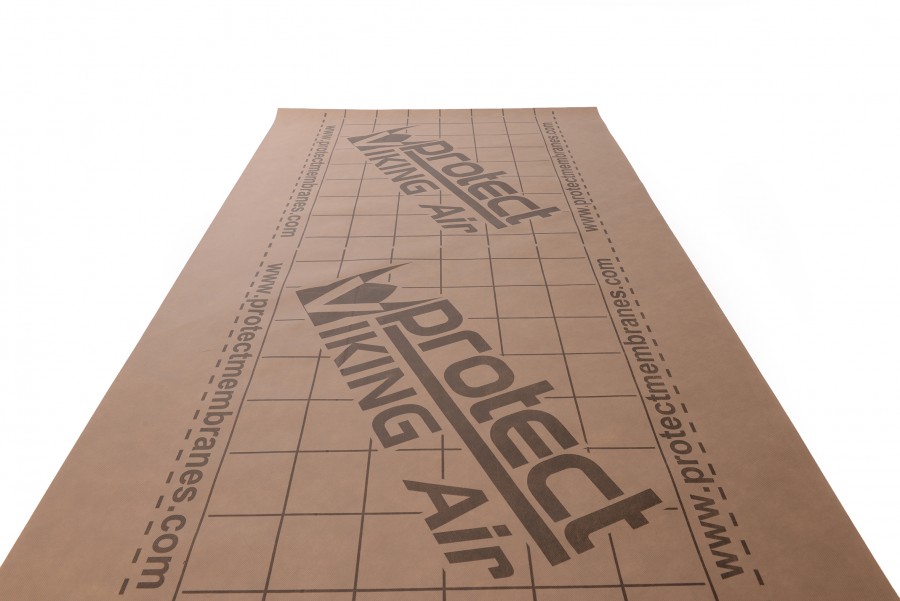
Q. In which wind zones is Protect Viking Air compliant?
A. Protect Viking Air can be used in wind uplift zones 1-4 at the widest batten gauge of 345mm, ensuring wide coverage across the UK and throughout Ireland and is superior to any alternative air permeable underlay product on the market, without the need for an additional counter batten or integral tape. The product’s resistance to wind pressure is 1569 Pa when tested to Annex A of BS 5534. At 310mm batten gauge or when used on sarking board, Viking Air has unrestricted use, being suitable in wind uplift zones 1-5, achieving a resistance to wind pressure of 2094 Pa.
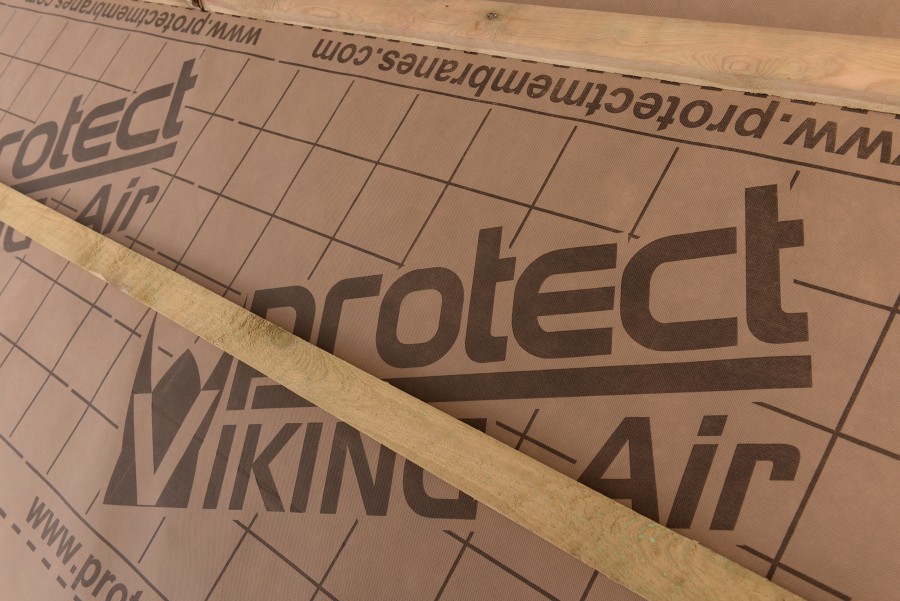
Q. Is Protect Viking Air independently third party certified?
A. Yes. Like all Glidevale Protect roofing underlays which are tried, tested and regularly installed over many years, Viking Air’s performance is backed up by full, third party, independent certification from BM TRADA’s Q-Mark Registration Scheme, giving confidence and reassurance in specification. Viking Air’s BM TRADA Q Mark Registration Schedule and Certificate can be downloaded from the Protect website - www.protectmembranes.com.

Enquiry from Specification Online technical@glidevaleprotect.com.
Follow us on LinkedIn.
